Peoplecraft.AI
Generating images and videos of people tailored to user preferences through gamified interactions
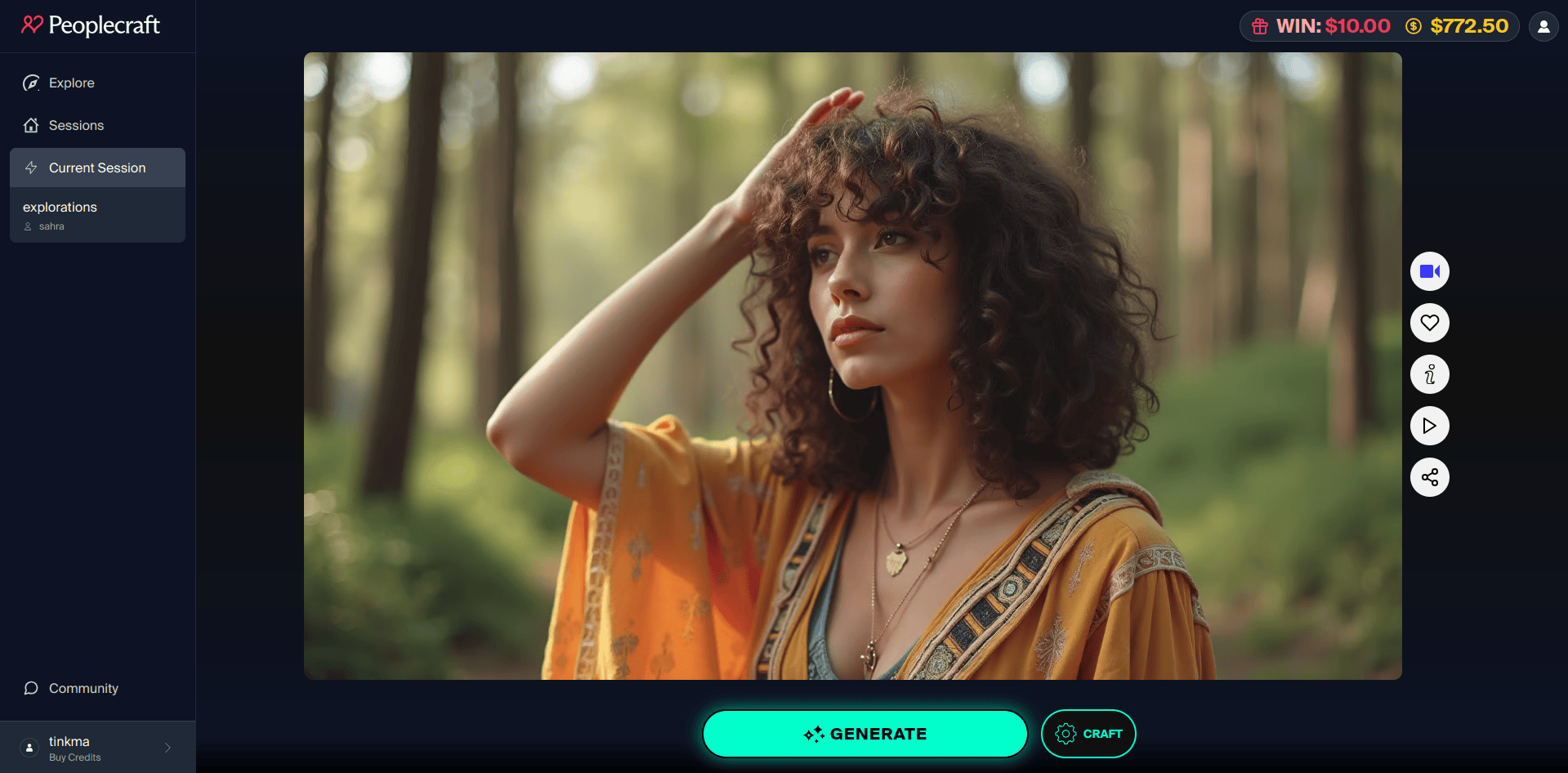
Project Summary
Our fascination with human appearance, rooted in evolution, has found a new frontier in AI-generated people. Peoplecraft is an online platform that merges advanced image and video generation models with gamified user experiences, enabling rapid creation and customization of hyper-realistic virtual people. Through an intuitive interface, users gain precise control over appearances while the system continually refines outcomes based on individual preferences using serendipity engineering techniques. Peoplecraft explores novel user experience paradigms in Generative AI. It is a collaboration between Samim Winiger and Felix Lorenz.
Peoplecraft is a online service: Peoplecraft.ai
Project Research
The Fascination with Human Appearance
Our innate interest in how others present themselves is deeply rooted in evolution and neurobiology. This ability to discern subtle physical variations is crucial for empathy, emotional intelligence, and complex social dynamics.
Throughout history, culture has both mirrored and amplified this fascination, from ancient sculptures to modern digital media. Today's representations are often highly curated, far from natural. While this trend raises valid concerns, the artful depiction of physical form, when balanced with respect and awareness, can reflect our evolving aesthetic values and societal norms. It serves as a mirror to our collective consciousness, showcasing how we perceive and value human physicality in different eras and contexts.

The Rise of AI-Generated Realistic Human Images
The evolution of AI-powered image generation has been remarkable. Systems like Midjourney, Stable Diffusion, and Flux now produce images almost indistinguishable from photographs. This leap in quality is matched by improved controllability. Modern AI can interpret complex prompts with impressive accuracy.
While AI excels at generating various images, its mastery of human appearances is particularly noteworthy. Our brains are uniquely attuned to human faces and forms, making this a special kind of Turing test. The fact that AI can now create convincing human images raises many questions about our relationship with visual media and human appearances. Its impact has yet to be fully digested.

UX of Generative AI: An Emerging New Paradigm
As generative systems reach "good enough" quality, the challenge is shifting from improving baseline performance to enhancing user experiences. The past decade's vague notion of "general creativity augmentation" is giving way to specialized tools tailored to specific domains. In a world where we can generate enormous amounts of media on demand and where creation skill barriers are plummeting, a core challenge is how to prevent generative media becoming meaningless spam with negative value.
The emerging UX paradigm for Generative AI systems weakens the focus on artifacts, instead emphasizing value creation through guided exploration, community engagement, domain-specific precise controls and hyper-personalization: Media tailored to each user's unique needs and interests, which are continuously learned and adapted by AI systems.

Games, Managed Attention & Wireheading
Games have long pioneered interactive media, continuously keeping users engaged and delighting them beyond explicit requests. Gamification has since proliferated far beyond gaming: platforms like TikTok captivate with endless feeds of bite-sized content and minimal game mechanics, delivering steady streams of endorphin hits.
Today, game-like experiences are becoming cornerstones of the emerging Generative AI UX paradigm. AI's rapidly growing capability to sense, predict and manage user engagement and mental states foreshadows a potential form of "Wireheading" — systems that directly stimulate pleasure centers through carefully crafted, adaptive stimuli. While adaptive, game-like AI experiences promise unprecedented UX enhancement, they also venture into complex ethical and psychological territories. As AI media is quickly eclipsing traditional media forms, it's crucial to explore its implications.

Peoplecraft.AI
Peoplecraft is an experiment in generating hyper-realistic images and videos of people tailored to user preferences through gamified interactions
Peoplecraft is a online service: Peoplecraft.ai
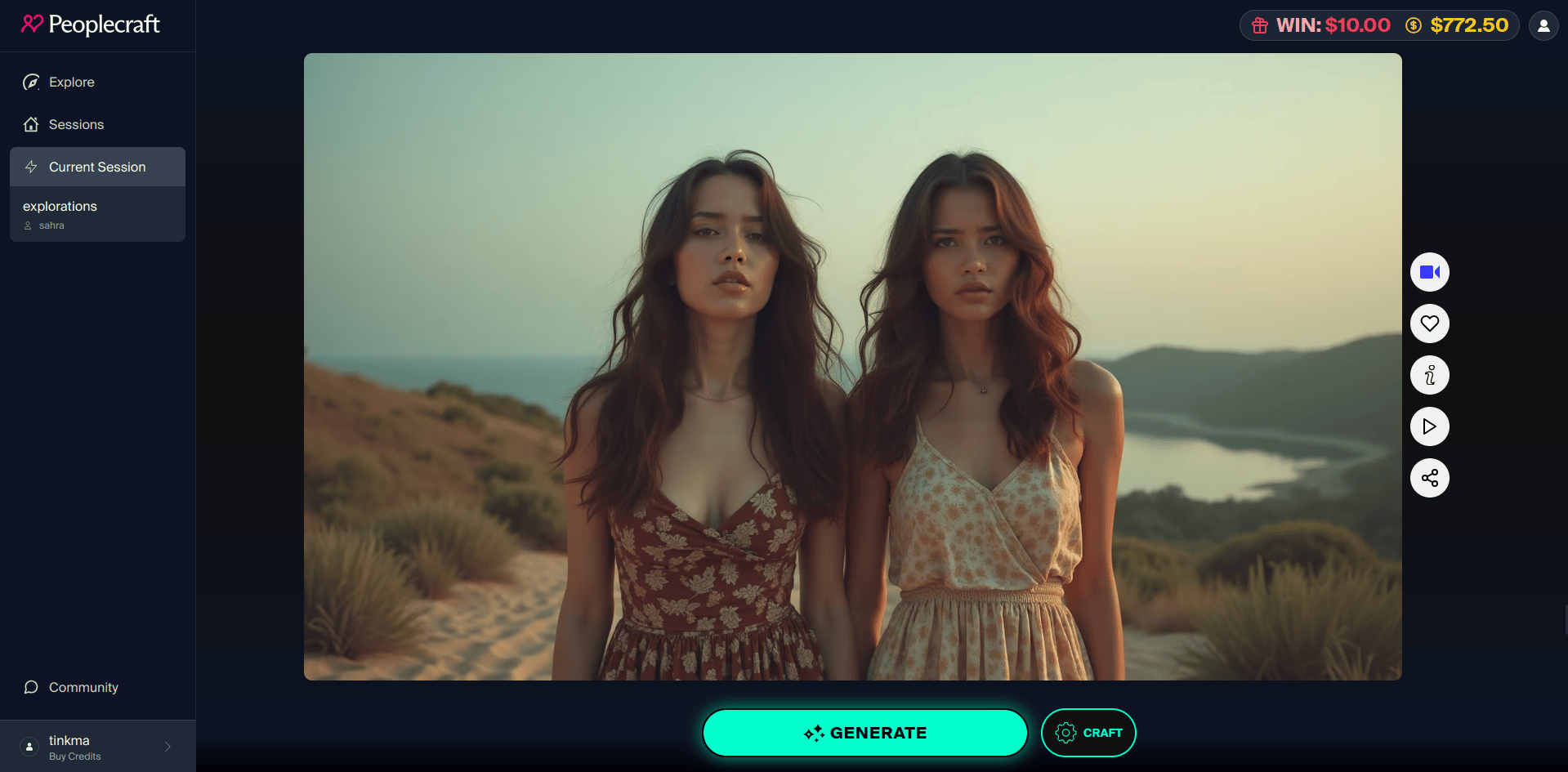
Peoplecraft is an online platform that merges advanced image and video generation models with gamified user experiences, enabling rapid creation and customization of hyper-realistic virtual people. Through an intuitive interface, users gain precise control over appearances while the system continually refines outcomes based on individual preferences using serendipity engineering techniques. Peoplecraft explores novel user experience paradigms in Generative AI, probing the delicate balance between generative capabilities, gamified interactions, and soft-wireheading. In doing so, it raises thought-provoking practical and ethical questions about the future of human appearance and UX.

The core concept of Peoplecraft is elegantly simple:
- Users engage in playful customization of virtual individuals through an intuitive, game-like character creation interface. They define desired attributes such as hair color, body shape, and fashion style.
- These preferences are passed to a Large Language Model, which then crafts effective prompt instructions for a text-to-image AI model to generate lifelike human images.
- The static images can be brought to life using an "image-to-video" model, producing hyper-realistic animated sequences.
- Users can easily guide the system towards their ideal outcomes by simply liking images and providing brief critiques, allowing for continuous refinement.
- The character creation process is gamified, featuring a slot machine-inspired mechanism that offers rewards in the form of free images with each generation round.
- All generated content is shared within a community gallery, where users can instantly remix any image with a single click, fostering creativity and collaboration.

Craft your Character - Beyond prompting
Bring your dreams to life with a intuitive game-like character creator UI. Select traits or use the randomizer for unexpected inspiration.
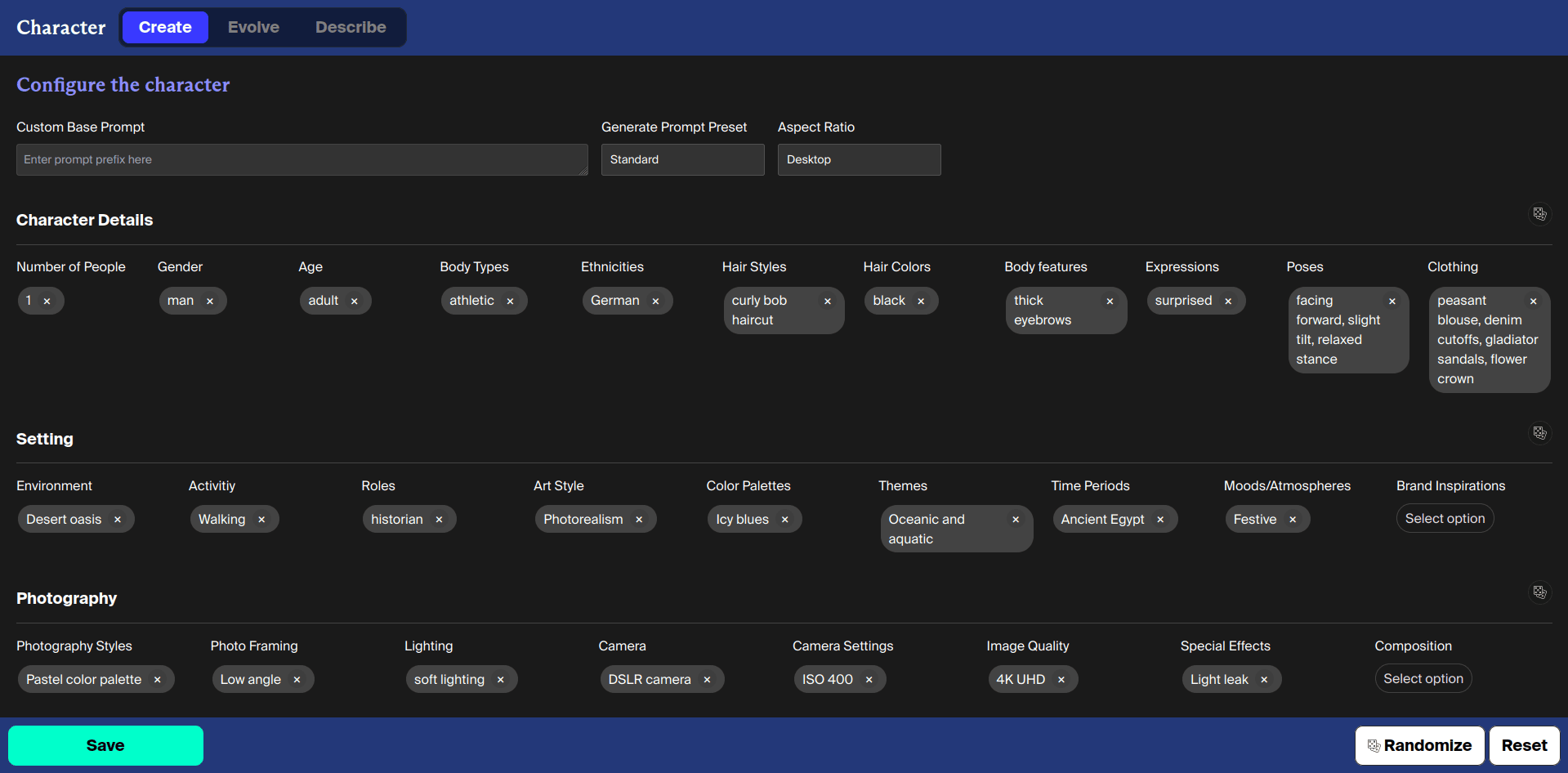
Generate Hyper-realistic Images and Videos
Watch as stunning, hyper-realistic images and videos come to life swiftly.
Evolve Your Character - with Serendipity Engineering
Instead of manual creation, simply favorite images you like and critique them. The AI learns from your preferences, blending the best features to generate exciting new variations. Watch your character transform and improve with each iteration.
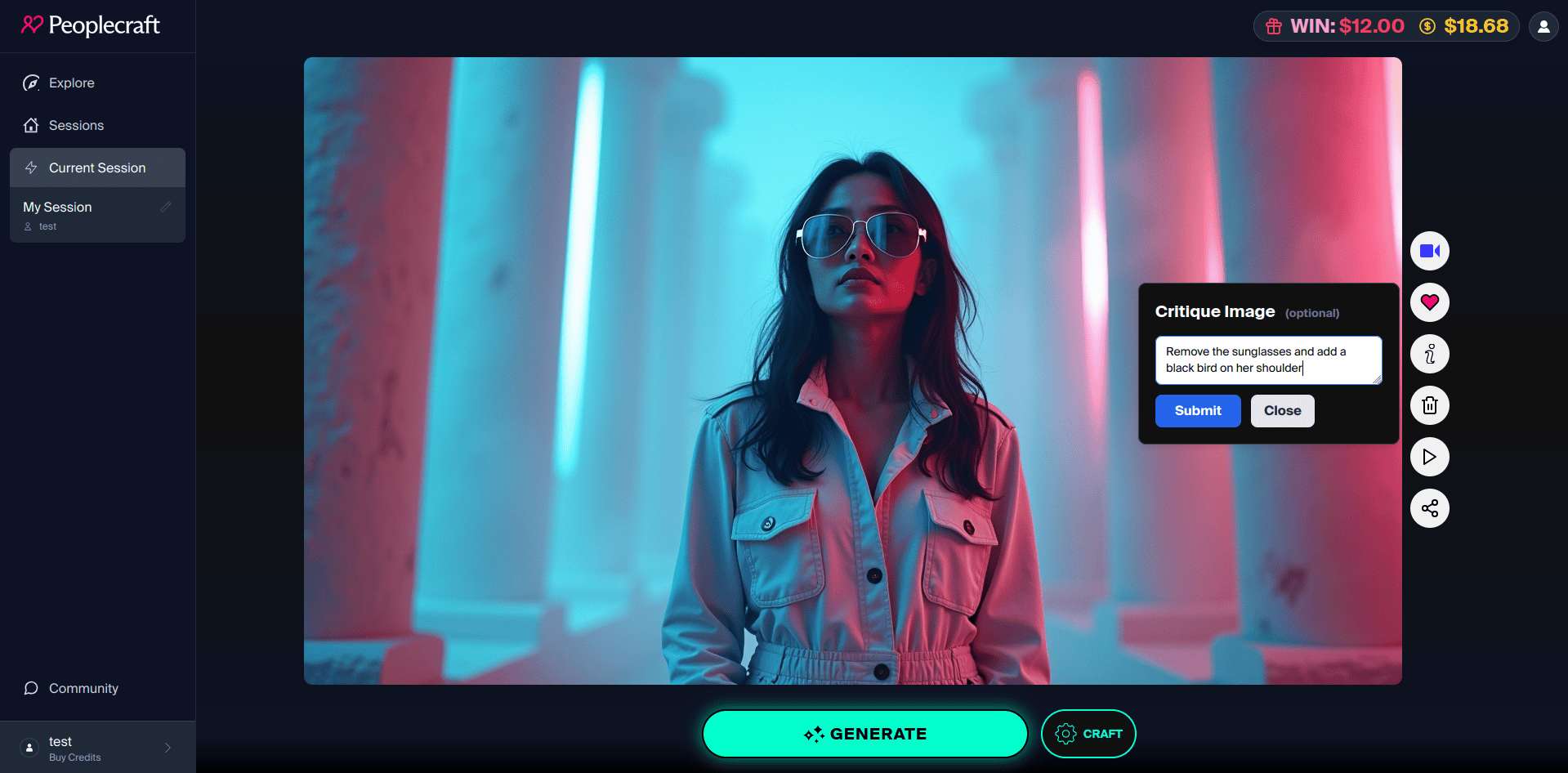
Explore, Remix & Share
Explore a vast gallery of user-created people. Harness the community's collective genius and remix any images into a unique creations.
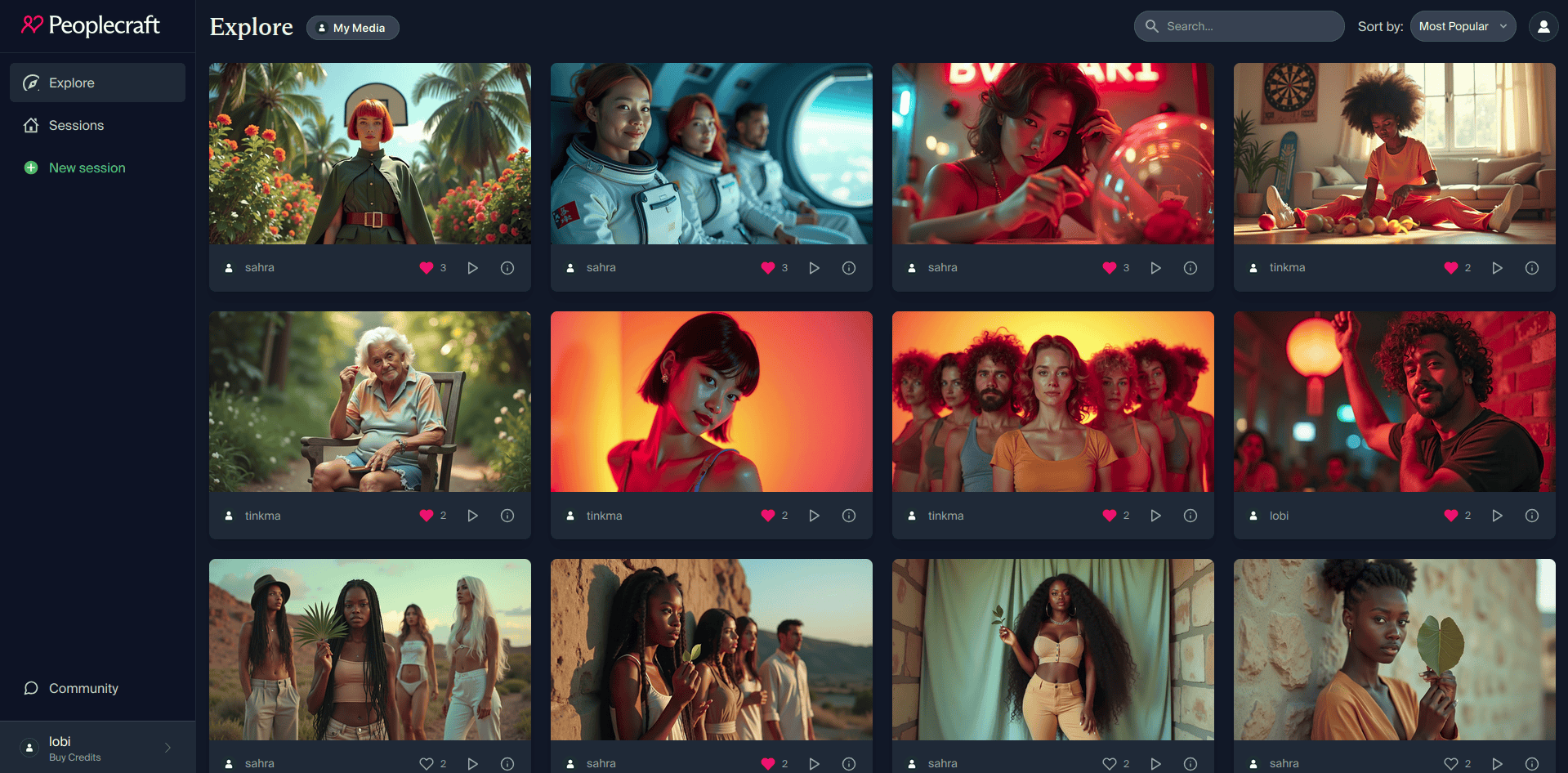
Earn Rewards
A fun, game-like reward system turns creation into an exciting adventure. You have the chance to win credits with each generated image, unlocking more free images. The more you create, the more you can win.
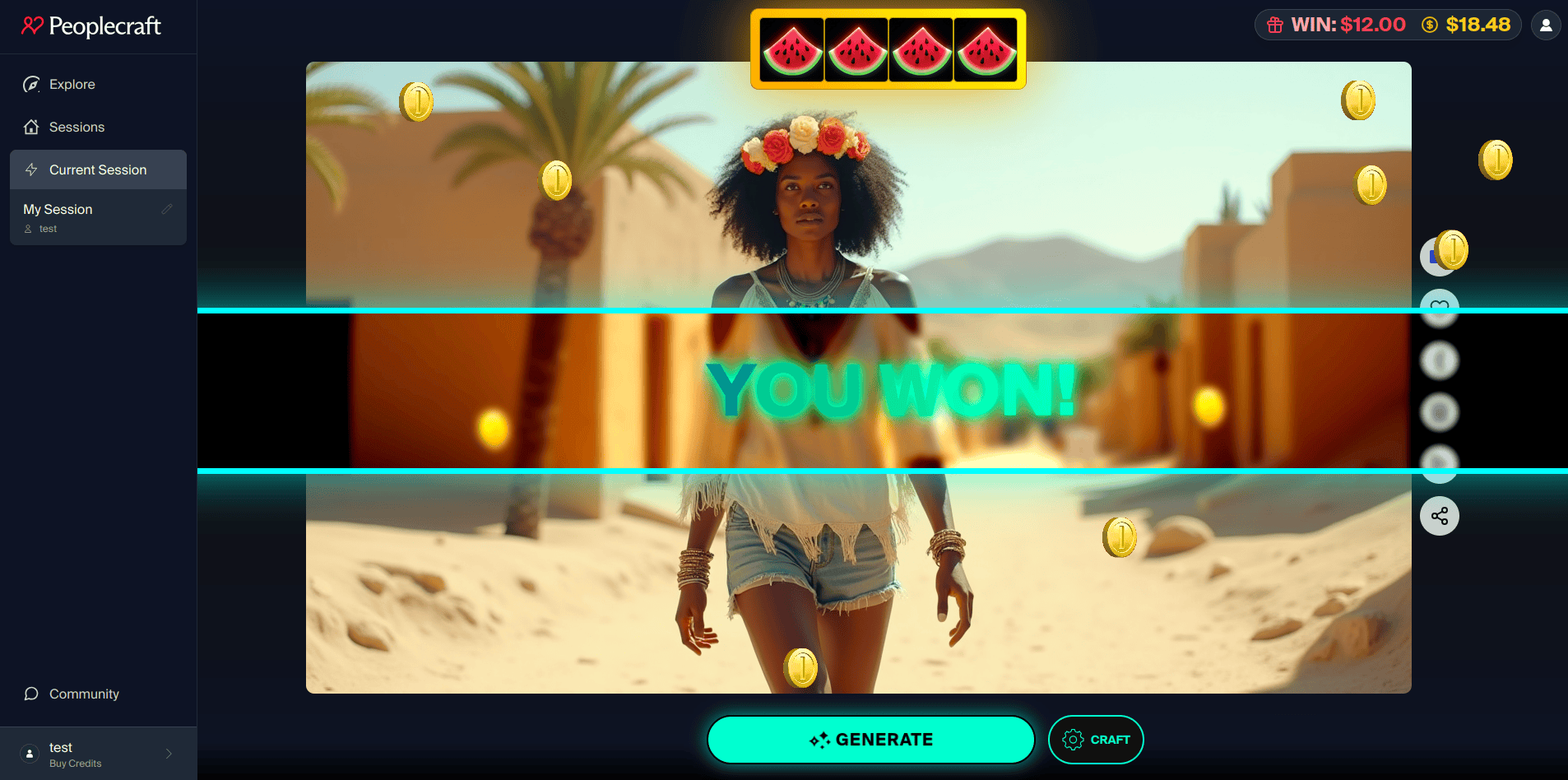
Here is a selection of the examples I generated with Peoplecraft.AI in a very short time.
Final Thoughts
As we conclude this experiment in the exploration of AI generated people spaces, it's clear that our relationship with visual media and human appearances is profoundly shifting. Peoplecraft.AI represents a modest effort to reimagine how we harness the potential of AI and game mechanics — not just for generating virtual people, but also in fostering new ways of interacting with Generative AI systems. The challenges we are facing with hyper-realistic AI media and soft-wireheading techniques are not mere details but opportunities to renegotiate how we relate to ourselves, other people, and machines.
As AI increasingly integrates with our media ecosystem, it challenges us to envision a future where the boundaries between real and imaginary are permanently blurred, and our notions of identity, authenticity, and human connection are fundamentally redefined.
Peoplecraft is one of those funny experiments that needed to happen as a reference point for wireheading debates we'll see in the coming years. Conceptually & technically, an achievement. But to be honest, I have a strong aversion to fake synthetic people, hence it will be short-lived.
Samim & Felix, September 2024
